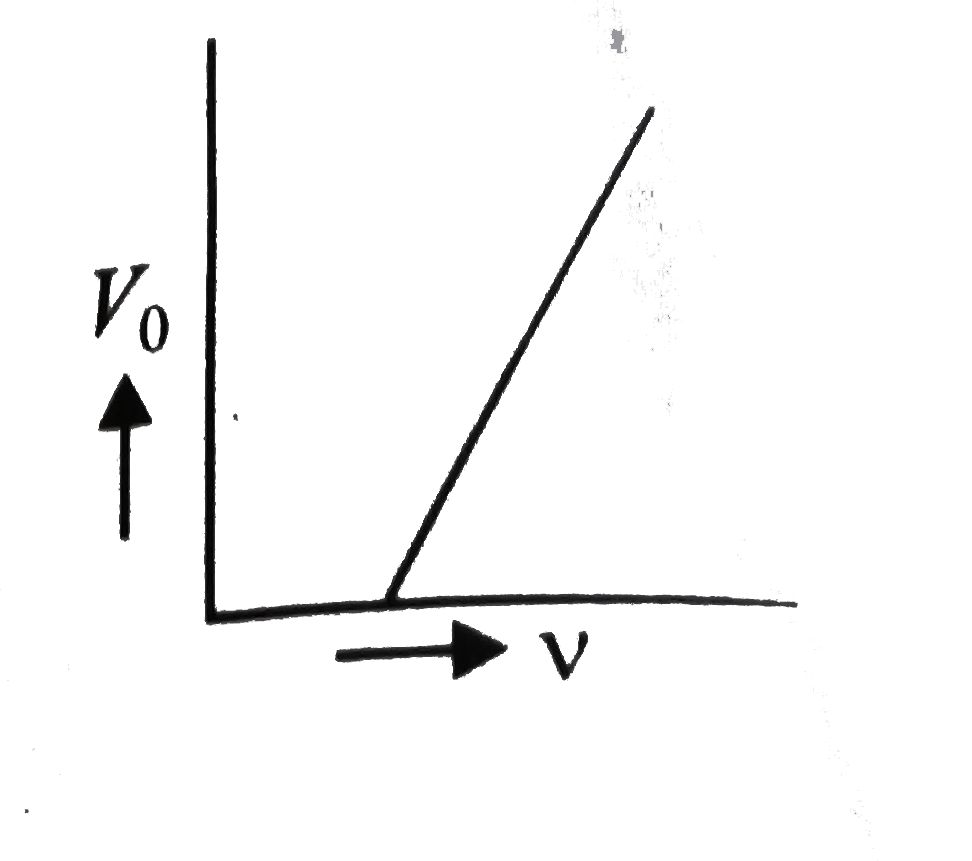The ratio of slopes of Kmax vs. V and V0 vs. v curves in the photoelectric effect gives (v= freqency. Kmax= maximum kinetic energy, V0=stopping potential) :
charge of electron
Planck's constant
work function
the ratio of Planck's constant of electronic charge
The correct Answer is:A
Step by step video, text & image solution for The ratio of slopes of K_(max) vs. V and V_(0) vs. v curves in the photoelectric effect gives (v= freqency. K_(max)= maximum kinetic energy, V_(0)=stopping potential) : by Chemistry experts to help you in doubts & scoring excellent marks in Class 12 exams.
Topper's Solved these Questions
- BOOK - RESONANCECHAPTER - NUCLEAR CHEMISTRYEXERCISE - Exercise-201videos
NUCLEAR CHEMISTRY
- BOOK - RESONANCECHAPTER - NUCLEAR CHEMISTRYEXERCISE - Exercise-211videos
NUCLEAR CHEMISTRY
- BOOK - RESONANCECHAPTER - NUCLEAR CHEMISTRYEXERCISE - PART -II32videos
NUCLEAR CHEMISTRY
- BOOK - RESONANCECHAPTER - NITROGEN CONTAINING COMPOUNDSEXERCISE - ORGANIC CHEMISTRY(Nitrogen containing Compounds)30videos
NITROGEN CONTAINING COMPOUNDS
- BOOK - RESONANCECHAPTER - P BLOCK ELEMENTSEXERCISE - PART -II24videos
P BLOCK ELEMENTS
Similar Questions
Knowledge Check
- Question 1 - Select One
The stopping potential (V0)
ADepends upon the angle of incident lightBDepends upon the intensity of incident lightCDepends upon the surface nature of the substanceDIs independent of the intensity of the incident light - Question 2 - Select One
Which of the following graphs is correct with respect to phtotelectric effect ?
Where v → Frequency of EMR
KEmax→ Maximum kinetic energy of photon-electron
I→ Intensity of EMR ltbr> VS.P.→ Stopping potential
nPE→ Number of photon electronA B
B C
C D
D
- Question 3 - Select One
The emission of electrons from a metal surface exposed rto light radaition of appropriate wavelength is called photoelectroic effect .The emmited electron are called photo=-weklectron work function of threshold energy may be defined as the minimum amount of energy required to ejercted electron from a most surface .According to Einstein
Maximum kinetic energy of ejected electron = Aborbed energy - Work function
12mv2max=h(v)−h(vn)=hv[1λ−1λn]
Where vn and λ0 are thereshold frequency and threshold wavelength respectively
Sopping potential : it is the miximum potential at which the photoelectric current becomes zero if V0 is the stopping potential eV0=h(v−v0)
In the photoelectric currect effect the shape of strainght line graph between stopping potential (V0) and frequency of incident light (V) gves
 Acharge on electronBwork function of emitterCplak's constantDratio of plank's constyant to charge on electron
Acharge on electronBwork function of emitterCplak's constantDratio of plank's constyant to charge on electron
The stopping potential in an experiment on photoelectric effect is 1.5 V. what is the maximum kinetic energy of the photoelectrons emitted ?
View SolutionThe stopping potential in an experiment on photoelectric effect is 2V. What is the maximum kinetic energy of the photoelectrons emitted ?
View SolutionWhy wave theory of light could not explain the photoelectric effect ? State two reasons. Draw graph between frequency ν vs stopping potential V0 .
View SolutionStatement I A metallic surface is irradiated by a monochromatic light of frequency v>v0 ( the threhold frequency ). The maximum kinetic energy and the stopping potential are Kmax and V0 respectively. If the frequency incident on the surface is doubled, both the Kmax and V0 are also doubled.
Statement II The maximum kinetic energy and the stopping potential of photoelectrons emitted from a surface are linearly dependent on the frequency of incident light.View SolutionThis question has statement - 1 and statement - 2 of the four choice given after the statements choose the one that best describes the two statements
statement - 1 : A metallic surface is irradiated by a monochromatic light of frequency v>v0(thethresholdequency).Themaxim,umkimetice≠rgyandthes⊤πngpotentialareK_(max) and V_(0)respectivelyiftheequency∈cntonthesurfaceisdoub≤d,⊥htheK_(max) and V_(0) are also doubled
statement - 2 : The maximum kinetic energy and the stopping potantial of photonelectron emitted from a surface are linearly dependent on the frequency of incident lightView Solution

